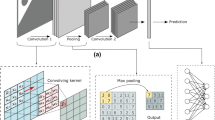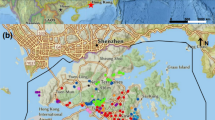Abstract
In the exploration and production of fossil resources, the characterization of rock facies is critical for estimations of rock physical properties, such as porosity and permeability, and for reservoir detection and simulation. We propose a new machine learning (ML) algorithm for characterizing rock facies using a convolutional neural network (CNN) with feature engineering and data padding strategies. In the new ML algorithm, we extend rock feature data from 1-dimensional “profile” to 2-dimensional maps by padding the original dataset. The 2-dimensional padded rock facies map enables the CNN to capture the inherent geological features while keeping the local continuities. In this new ML algorithm, we only need a simple CNN design and structure to efficiently achieve accurate classification of rock facies. We test the feasibility of applying this new algorithm using a verifiable well logging dataset from the Panoma gas field in southwest Kansas. The results show that our new ML algorithm with a simple CNN structure has achieved higher accuracy in classifications of rock facies in comparison with the CNN results of the 2016 SEG ML contest. This new ML algorithm has application potential in automatic rock facies characterization with high accuracy and efficiency.









Similar content being viewed by others
References
Baldwin, J. L., Bateman, R. M., & Wheatley, C. L. (1990). Application of a neural network to the problem of mineral identification from well logs. The Log Analyst, 31(05), 279–293.
Busch, J., Fortney, W., & Berry, L. J. S. (1987). Determination of lithology from well logs by statistical analysis. SPE Formation Evaluation, 2(04), 412–418.
Cuddy, S. (1997). The application of the mathematics of fuzzy logic to petrophysics. In SPWLA 38th annual logging symposium, 1997. Society of Petrophysicists and Well-Log Analysts.
Delfiner, P., Peyret, O., & Serra, O. J. S. (1987). Automatic determination of lithology from well logs. SPE Formation Evaluation, 2(03), 303–310.
Dubois, M., Bohling, G., & Chakrabarti, S. (2004). Comparison of rock facies classification using three statistically based classifiers. Technical Report 2004-64.
Dubois, M. K., Bohling, G. C., & Chakrabarti, S. J. C. (2007). Comparison of four approaches to a rock facies classification problem. Computers & Geosciences, 33(5), 599–617.
Gill, D., Shomrony, A., & Fligelman, H. J. A. B. (1993). Numerical zonation of log suites and logfacies recognition by multivariate clustering. AAPG Bulletin, 77(10), 1781–1791.
Kapur, L., Lake, L. W., Sepehrnoori, K., Herrick, D. C., & Kalkomey, C. T. (1998) Facies prediction from core and log data using artificial neural network technology. In SPWLA 39th annual logging symposium, 1998. Society of Petrophysicists and Well-Log Analysts.
Mikołajczyk, A., & Grochowski, M. (2018). Data augmentation for improving deep learning in image classification problem. In 2018 international interdisciplinary PhD workshop (IIPhDW), 2018 (pp. 117–122).
Rogers, S. J., Fang, J., Karr, C., & Stanley, D. J. A. (1992). Determination of lithology from well logs using a neural network. AAPG Bulletin, 76(5), 731–739.
Rumelhart, D. E., Hinton, G. E., & Williams, R. J. (1986). Learning representations by back-propagating errors. Nature, 323(6088), 533.
Scherer, D., Müller, A., & Behnke, S. (2010). Evaluation of pooling operations in convolutional architectures for object recognition. In Artificial neural networks—ICANN 2010 (pp. 92–101): Berlin: Springer.
Werbos, P. J. (1994). The roots of backpropagation: From ordered derivatives to neural networks and political forecasting (Vol. 1). New York: Wiley.
Acknowledgements
We are thankful for Dr. Geoff Bohling and Dr. Marty Dubois of the University of Kansas for providing the dataset and making it accessible online at (http://www.people.ku.edu/~gbohling/EECS833/).
Author information
Authors and Affiliations
Corresponding author
Additional information
Publisher's Note
Springer Nature remains neutral with regard to jurisdictional claims in published maps and institutional affiliations.
Rights and permissions
About this article
Cite this article
Wei, Z., Hu, H., Zhou, Hw. et al. Characterizing Rock Facies Using Machine Learning Algorithm Based on a Convolutional Neural Network and Data Padding Strategy. Pure Appl. Geophys. 176, 3593–3605 (2019). https://doi.org/10.1007/s00024-019-02152-0
Received:
Revised:
Accepted:
Published:
Issue Date:
DOI: https://doi.org/10.1007/s00024-019-02152-0




